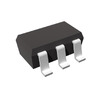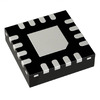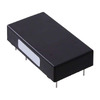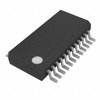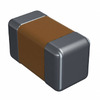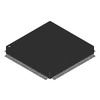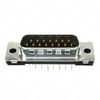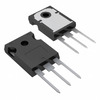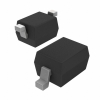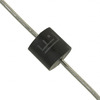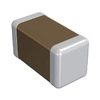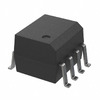Engine Control Unit (ECU): Functions, Symptoms, Testing, and Troubleshooting Guide
An Engine Control Unit (ECU) is like the brain of your car's engine. It gathers information from different sensors around the engine and uses this information to control things like fuel use, airflow, and spark timing. This guide explains how the ECU works, covers the difference between older analog ECUs and modern digital ones, describes how ECUs vary in different types of vehicles, and helps you recognize when your ECU might not be working correctly. It also shows you how to test an ECU using a simple tool called a multimeter, making troubleshooting easier and safer.Catalog

What is an Engine Control Unit (ECU)?
The Engine Control Unit (ECU) is an important part of modern cars that helps the engine run smoothly and efficiently. It gathers information from sensors and makes quick adjustments to things like fuel use, ignition timing, and airflow. These changes help the engine perform well and use less fuel. If the ECU stops working properly, the car may have problems like slow acceleration, using too much fuel, or even engine failure. The ECU has several parts, including a tiny computer chip, circuit boards, and other electronic pieces. The chip runs special software that controls how the engine works. This software can be updated or changed to improve the car’s performance or fix any issues.
Engine Control Units (ECUs) can be divided into two main types based on how they process information: analog and digital. Analog ECUs use basic electrical components like resistors, capacitors, and transistors to control different engine functions. They work by adjusting voltage levels to regulate fuel injection, ignition timing, and other operations. These types of ECUs are commonly found in older vehicles or simpler engine systems that do not require rapid calculations. Because they rely on fixed electrical circuits, analog ECUs have limited flexibility and cannot easily adapt to changing driving conditions. While they were effective in earlier automotive designs, they have mostly been replaced by more advanced digital ECUs in modern cars.
Digital ECUs, on the other hand, are much more sophisticated. They use powerful microprocessors to collect and analyze data from various sensors in time. These ECUs can quickly adjust fuel injection, ignition timing, and other engine parameters based on driving conditions, improving efficiency and performance. Digital ECUs are capable of handling complex calculations, making them needed for modern vehicles with advanced engine management systems. Since they operate using software, others can update or modify them to improve performance or meet new regulations. This flexibility makes digital ECUs a big part of today’s automotive technology, ensuring better fuel efficiency, and lower emissions.
ECU Variability Across Different Vehicle Models
Every modern vehicle has an Engine Control Unit (ECU) that helps manage the engine, but its complexity depends on the type of car. Sports cars have advanced ECUs that control powerful engine systems like turbochargers, variable valve timing, and different driving modes. These ECUs work very fast, adjusting engine settings in time to improve speed, power, and performance. Some even allow drivers or mechanics to fine-tune the engine for racing or better fuel efficiency. This helps sports cars respond quickly to road conditions and driver inputs, making them more powerful and dynamic.

Figure 2. ECU Integration in Modern Vehicles
On the other hand, economy cars use simpler ECUs that focus on basic functions like fuel injection, ignition timing, and emissions control. These ECUs are designed to improve fuel efficiency and ensure the engine runs smoothly for a long time. While they don’t have the advanced tuning options of sports car ECUs, they still play a role in keeping the engine working properly. No matter how simple or complex an ECU is, its main job is always the same: to process data from sensors and make quick adjustments that improve the engine’s efficiency, performance, and lifespan.
Core Functions of the Engine Control Unit (ECU)
The Engine Control Unit (ECU) is a key part of the engine. It helps the engine work well, use fuel efficiently, and stay reliable by controlling important functions:
Variable Valve Timing (VVT) Control
The Engine Control Unit (ECU) changes the timing of when the intake and exhaust valves open and close to improve how the engine runs. By adjusting the valve timing based on engine speed and driving conditions, the system helps air flow more smoothly into the engine’s cylinders. This better airflow leads to stronger engine performance without using extra fuel. As a result, the engine can produce more power while still being efficient. The system also helps deliver steady power across different speeds, making the car feel more responsive when accelerating. Whether the vehicle is moving slowly in traffic or speeding up on the highway, VVT helps ensure that the engine is running at its best. This makes driving smoother and more enjoyable while also helping the engine last longer.
Besides improving power, VVT also helps the engine use less fuel and produce fewer emissions. By carefully controlling when the valves open and close, the system reduces wasted fuel and makes the engine burn fuel more completely. This not only saves gas but also helps cut down on pollution. The system lowers harmful gases, such as nitrogen oxides (NOx) and unburned fuel particles, making the car more eco-friendly. Since VVT can adjust to different driving situations, it keeps the engine running efficiently whether the driver is in stop-and-go traffic or cruising at a steady speed. Because of these benefits, many modern cars use VVT technology to provide a good balance of power, fuel economy, and lower emissions, making vehicles both powerful and efficient.

Figure 3. Variable Valve Timing (VVT) Mechanism and Hydraulic Control
Air-Fuel Mixture Regulation
The Engine Control Unit (ECU) carefully controls how much fuel is mixed with air before it enters the engine. It does this by using information from different sensors, such as the Mass Air Flow (MAF) sensor, which measures the amount of air going into the engine. Based on this data, the ECU decides how much fuel to inject to keep the engine running smoothly. The goal is to keep the right balance between air and fuel, which is usually about 14.7 parts air to 1 part fuel in gasoline engines. If there is too much fuel (a rich mixture), it can cause extra fuel consumption, carbon buildup, and pollution. On the other hand, if there is too much air (a lean mixture), the engine can overheat or get damaged over time. To prevent these issues, the ECU constantly adjusts how long and when the fuel injectors spray fuel, making sure the engine gets the right mix depending on whether the car is speeding up, slowing down, or carrying a heavy load.
Keeping the right air-fuel balance is also important for reducing pollution. If the mixture is correct, harmful gases like carbon monoxide (CO), nitrogen oxides (NOx), and unburned fuel (hydrocarbons) are kept to a minimum. Modern cars use a system called closed-loop fuel control, where the ECU listens to oxygen sensors in the exhaust pipe and makes small changes to keep the fuel mixture just right. This helps the car meet strict pollution rules and also protects important parts like the catalytic converter, which cleans exhaust gases. Newer technologies, such as direct fuel injection and variable valve timing, also help make fuel burning more efficient. As car technology improves, some ECUs now use artificial intelligence and machine learning to better control the air-fuel mix, leading to cleaner, more fuel-efficient, and more powerful engines.

Figure 4. Air-Fuel Mixture Regulation
Ignition Timing Control
The ECU controls the exact moment when the spark plug ignites the fuel-air mixture inside the engine cylinders. This timing is very important because it helps the engine produce the most power while using fuel efficiently. If the spark happens too early or too late, the engine may not run smoothly, which can lead to lower performance, higher fuel consumption, and even damage to engine parts. The ECU constantly adjusts the timing based on different factors, such as engine speed, temperature, and how hard the driver is pressing the gas pedal. Modern systems use sensors and smart technology to make these adjustments, helping the engine run properly in all kinds of driving situations, whether the car is idling, cruising, or speeding up.
One of the main reasons ignition timing is so important is to prevent engine knocking, which happens when the fuel-air mixture burns too soon or unevenly. Knocking can create too much pressure inside the cylinder, which might damage important engine parts like pistons and cylinder walls. To stop this from happening, the ECU uses special sensors to detect knocking and adjust the timing to keep the engine safe. Correct ignition timing also helps reduce pollution, as bad timing can lead to more harmful gases being released from the engine. By carefully controlling when the spark plug fires, the ECU helps the engine run smoothly, last longer, and stay fuel-efficient while also reducing its impact on the environment.
Sensor Data Processing
The Engine Control Unit (ECU) constantly collects information from different sensors that track important engine conditions, such as how much the throttle is open, how fast the engine is running, and the amount of oxygen in the exhaust. The ECU uses this data to make quick decisions that keep the engine running smoothly. For example, when the throttle position sensor detects a change, the ECU adjusts the fuel supply to match the driver’s input, helping the car respond properly. The engine speed sensor helps the ECU control fuel injection and ignition timing, making sure the engine runs efficiently at different speeds. Meanwhile, the oxygen sensor checks how well the fuel is burning, so the ECU can adjust the air-fuel mixture to improve fuel efficiency and reduce pollution. By constantly analyzing and adjusting these factors, the ECU helps the engine perform well while preventing unnecessary wear and tear.
After gathering information from the sensors, the ECU makes immediate changes to keep the engine working correctly and to avoid problems. If the throttle sensor detects that the driver is pressing the gas pedal quickly, the ECU increases fuel delivery and changes ignition timing to provide the right amount of power. On the other hand, when the car slows down, the ECU reduces fuel supply to save fuel and lower emissions. If the oxygen sensor detects that the air-fuel mixture is unbalanced, the ECU adjusts it to prevent the engine from running poorly or producing too much pollution. By continuously monitoring and responding to sensor data, the ECU keeps the engine reliable, efficient, and environmentally friendly. This constant communication between sensors and the ECU is needed for modern vehicles, helping them run smoothly in all driving conditions while maximizing fuel efficiency and engine life.
Symptoms of a Bad Engine Control Unit (ECU)
If the ECU is not working properly, your car may have problems with how the engine runs. Catching these issues early can help prevent bigger damage to the engine and other important parts of the vehicle.
Unusual Engine Behavior
If a car’s engine is not running smoothly, it could mean there is a problem with the ECU. One common sign is slow or weak acceleration, where the car takes longer than normal to speed up or does not respond well when pressing the gas pedal. This can be frustrating, especially when trying to merge onto a road or pass another vehicle. The engine might also feel weaker overall, struggling to maintain speed or power. In some cases, the engine may stall, shutting off suddenly at stop signs, traffic lights, or even while driving. Another common issue is misfiring, which feels like sudden jerks or shaking while the car is moving. All of these problems can make driving difficult and may mean the ECU is not controlling the engine correctly.
These issues usually happen when the ECU does not properly manage things like fuel injection, ignition timing, or sensor data. If the ECU sends too much or too little fuel, the engine may not run efficiently, causing rough driving and power loss. If it controls the spark timing incorrectly, the engine may misfire or run unevenly. Also, if the ECU misreads sensor data, it can make poor adjustments to the engine’s air-fuel mixture, leading to more problems. These issues not only make driving harder but can also waste fuel and increase pollution. If left unchecked, they could damage important engine parts and lead to expensive repairs.
Check Engine Light Activation
The Check Engine Light (CEL) is one of the main signs that something in the vehicle might be wrong, and it can often be linked to problems with the Engine Control Unit (ECU). This light is meant to help drivers by warning them when the car detects an issue, but sometimes, a faulty ECU can cause it to turn on for the wrong reasons. The ECU is like the car’s brain, reading information from different sensors and making sure everything runs smoothly. If the ECU has a problem, it might misread this information and send out error codes that don’t match the actual issue. This can make diagnosing the problem confusing because mechanics might check and replace parts that are actually working fine when the real issue is with the ECU itself.
If the CEL stays on for a long time and there are no clear mechanical problems, this could mean the ECU is not working correctly. Normally, the CEL turns on when there’s a real issue, and in some cases, it might even blink if the problem is serious. But when the ECU is faulty, the light might stay on even after repairs have been done or might turn on and off at random times. This can lead to unnecessary fixes and frustration if the real cause isn’t found. To be sure, run special tests on the ECU to check if it is working properly. If the ECU is the problem, it may need to be reset, reprogrammed, or replaced to make sure the vehicle’s warning system works correctly again.

Figure 5. Check Engine Light (CEL) and ECU Diagnostics
Increased Emissions
The Engine Control Unit (ECU) is very important for controlling how a vehicle burns fuel and releases emissions. When it is working correctly, it keeps the right balance of fuel and air so the engine runs smoothly and produces fewer harmful gases. However, if the ECU is not working properly, it may mix too much or too little fuel with air, causing the engine to burn fuel inefficiently. This can lead to an increase in harmful emissions, such as carbon monoxide and other pollutants that pollute the air. A malfunctioning ECU can also make a vehicle fail an emissions test, which is required in many places to make sure cars meet environmental standards. In some cases, a faulty ECU may cause thick or dark smoke to come out of the exhaust, which is a sign that the fuel is not burning completely. This not only harms the environment but also affects the engine’s performance and may lead to expensive repairs if ignored.
If a vehicle starts releasing more emissions than usual, it could be a sign that the ECU is not working as it should. The driver might notice more exhaust smoke, which can mean that fuel is not burning properly. For diesel vehicles, black smoke often means too much fuel is being used, while gasoline-powered cars may release more carbon emissions if the ECU is faulty. High emissions are not just bad for the environment, they can also affect fuel efficiency and make the engine work harder than necessary. This could lead to other problems, such as reduced engine power and higher fuel costs. If emissions suddenly increase, it is important to check the ECU to see if it is causing the problem. Fixing ECU issues early can help prevent bigger engine problems and ensure the vehicle runs efficiently while staying within legal emissions limits.
How Does an Engine Control Unit Work?
An Engine Control Unit (ECU) is the brain of a modern vehicle, responsible for managing engine performance and efficiency. It continuously gathers data from various sensors and makes adjustments to optimize fuel consumption, emissions, and power output. By analyzing key inputs, the ECU ensures that the engine operates smoothly and safely under different driving conditions. One important input the ECU monitors is engine speed (RPM). The ECU uses this data to control fuel injection and ignition timing, making sure the engine runs efficiently at different speeds. Proper timing helps improve fuel economy and prevents engine knocking, which can cause damage over time. The throttle position sensor tells the ECU how much the driver is pressing the accelerator. Based on this information, the ECU adjusts the air and fuel mixture to provide the right amount of power. If the driver presses the accelerator harder, the ECU increases fuel injection to deliver more power, and if the throttle is released, it reduces fuel to save energy.
The ECU also relies on the manifold absolute pressure (MAP) sensor and intake air temperature sensor to fine-tune the air-fuel ratio. The MAP sensor measures air pressure in the intake manifold, while the intake air temperature sensor detects the air temperature. Together, these inputs help the ECU determine the right amount of fuel needed for efficient combustion under different weather and altitude conditions. Finally, the ECU improves efficiency and prevents engine damage by analyzing oxygen sensor and knock sensor signals. The oxygen sensor checks exhaust gases to ensure the fuel mixture burns correctly, reducing emissions. The knock sensor detects abnormal vibrations caused by engine knocking, allowing the ECU to adjust ignition timing and prevent damage. By processing all these inputs, the ECU helps keep the engine running smoothly, improving performance, fuel efficiency, and reliability.

Figure 6. ECU Sensor Inputs and Engine Control System
What is a Multimeter?
A multimeter is an important tool used to check electrical parts, such as an Engine Control Unit (ECU). This device helps measure different electrical values, making it easier to find and fix problems in an ECU or other electronic systems. Without a multimeter, figuring out electrical issues would be much harder because it gives clear information about how electricity is working in a system. The three main things a multimeter measures are voltage, current, and resistance. Voltage checks whether the ECU is getting the right amount of power, which is important because too much or too little can cause problems. Current tells us how electricity is flowing through the ECU, making sure everything is working as it should. Resistance helps find broken connections or damaged parts that could stop the ECU from working properly. Learning how to use a multimeter is very helpful for anyone working with electrical systems because it makes troubleshooting faster and easier.
There are two main types of multimeters: digital and analog. Digital multimeters (DMMs) are the most common because they show exact numbers on a screen, making them easy to read and reducing the chance of mistakes. Many digital multimeters have features like auto-ranging, which means they automatically pick the right setting, making them simple to use even for beginners. Analog multimeters, on the other hand, have a needle that moves to show the measurement. These are useful when you need to see changes happening, such as when voltage levels go up and down. While digital multimeters are better for accurate readings, analog multimeters are still helpful for checking signals that change over time. Both types have their own advantages, and the choice between them depends on what kind of work needs to be done.

Figure 7. Multimeter
Testing an ECU with a Multimeter
To check if an Engine Control Unit (ECU) is working properly with a multimeter, follow these steps:
Step 1: Preparing for ECU Testing
Required Tools and Equipment
• OBD-II Scanner – Retrieves diagnostic trouble codes (DTCs) and monitors data.
• Multimeter – Measures voltage, resistance, and continuity in ECU circuits.
• Oscilloscope – Analyzes signal speeds and waveforms.
• ECU Testing Harness – Ensures secure connections for probing.
• Diagnostic Software – Enables advanced ECU analysis and monitoring.
• Basic Hand Tools – Includes screwdrivers, pliers, and a socket set for accessing connectors.
• Protective Gear – Safety glasses and gloves for protection.
Safety Considerations
• Disconnect the Battery – Prevents potential short circuits.
• Cool Down the System – Avoid burns from hot components.
• Handle Electronics with Care – Prevents static damage.
• Follow Manufacturer Guidelines – Always reference the service manual.
• Work in a Ventilated Area – Ensures good air circulation.
• Use Proper Tools – Ensures accurate diagnostics.
Step 2: Testing the ECU

Checking ECU Power Supply Voltages
Before beginning any electrical work, ensure the vehicle is completely turned off by switching off the engine and ignition. To prevent accidental short circuits or potential damage to the ECU, disconnect the negative (-) terminal of the vehicle’s battery. Next, locate the Engine Control Unit (ECU), which is usually positioned in the engine bay, under the dashboard, or near the glove compartment, depending on the vehicle model. If unsure, refer to the vehicle’s service manual for precise location details.
To begin, set up the multimeter by turning the dial to DC voltage mode. If the multimeter has a manual range setting, select 20V to safely measure common automotive voltages. Next, reconnect the battery by reattaching the negative (-) terminal to restore power to the system. Once the battery is connected, proceed with attaching the multimeter leads. Connect the black lead (negative) to a good grounding point, such as the vehicle chassis or the battery’s negative terminal. Then, connect the red lead (positive) to the ECU’s power input terminal, referring to the wiring diagram to ensure the correct pin is used. After securing the connections, turn the ignition to the ON position without starting the engine, this allows power to flow to the ECU and enables voltage measurement. Finally, check the multimeter display and take note of the measured voltage readings.
The voltage readings should match the ECU’s expected power levels, which are typically +12V for the main power supply, +5V for sensor power, and +3.3V for certain low-voltage circuits. If the measured voltage is lower than expected or missing altogether, this could indicate potential issues with the wiring, fuses, or the ECU’s power supply. Further inspection may be necessary to diagnose and resolve the problem.
Testing Sensor Inputs and Outputs
Before testing, it is important to identify the sensors in engine performance. One of the most important is the Oxygen Sensor (O₂), which monitors the level of oxygen in the exhaust gases and helps adjust the air-fuel mixture for optimal combustion. The Throttle Position Sensor (TPS) detects the position of the throttle valve, determining how much air is entering the engine. Similarly, the Mass Airflow Sensor (MAF) measures the amount of air flowing into the engine, allowing the system to regulate fuel injection accordingly. Additionally, various temperature sensors, such as the coolant temperature sensor and intake air temperature sensor, help adjust engine timing and fuel mixture based on temperature readings.
To test these sensors, start by setting the multimeter to the appropriate mode based on the type of sensor being tested. For sensors that output a voltage signal, such as the oxygen sensor (O₂) and throttle position sensor (TPS), set the multimeter to DC voltage mode. For sensors that measure resistance, such as temperature sensors, switch the multimeter to resistance (ohms) mode. Next, locate the sensor and carefully disconnect its electrical connector to ensure the reading is not influenced by other components. Once disconnected, place the multimeter probes on the correct terminals of the sensor and record the voltage or resistance displayed on the multimeter. Finally, compare the measured values to the manufacturer’s specifications found in the vehicle’s service manual. If the readings fall outside the recommended range, the sensor may be faulty and require further diagnosis or replacement.
The sensor readings should change in response to external inputs, indicating that they are functioning properly. For example, when pressing the throttle, the Throttle Position Sensor (TPS) voltage should increase, reflecting the change in throttle position. If a sensor does not respond as expected or provides a constant reading without variation, it may be malfunctioning and require further inspection or replacement.
Verifying ECU Communication Signals
To ensure that the Engine Control Unit (ECU) is properly communicating with the vehicle’s diagnostic system, follow these steps carefully. To begin verifying ECU communication signals, first, locate the OBD-II (On-Board Diagnostics) port in the vehicle, typically found under the dashboard near the driver’s seat. Once located, securely plug in the OBD-II scanner to establish a stable connection with the ECU. Next, turn the ignition key to the ON position without starting the engine. With the scanner connected, access the ECU data by navigating through the scanner’s interface. Retrieve sensor readings, check for stored diagnostic trouble codes (DTCs), and review other relevant system information to assess the ECU's communication status.
While reviewing the ECU data, verify key parameters to ensure proper communication. Start by checking the Engine RPM (Revolutions Per Minute) to confirm that the values are displayed correctly. Unexpected fluctuations or a zero reading may indicate a communication issue. Next, examine the Coolant Temperature to ensure the temperature sensor is providing accurate data, as unusually high or low readings could signal a problem. Inspect the Sensor Readings from components such as the oxygen sensor, throttle position sensor, and mass airflow sensor to confirm they are functioning properly. Finally, review any Diagnostic Trouble Codes (DTCs) stored in the ECU, as these codes can help identify potential system malfunctions.
If the OBD-II scanner displays missing, intermittent, or incorrect signals, it is important to investigate potential causes. One common issue is faulty wiring damaged, frayed, or corroded wires can disrupt communication between the ECU and the scanner. Carefully inspect the wiring harness for any visible signs of wear or damage. Another possible cause is loose connectors. If electrical connectors are not securely fastened, they may cause intermittent signal loss or weak connections. Ensure that all connectors are properly seated and free of dirt or corrosion to maintain stable communication with the ECU.
Step 3: Interpreting Test Results
Once you have gathered test data, it’s important to interpret the results accurately. This step involves comparing the measured values to the expected normal readings and identifying any abnormalities that could indicate a problem.
Expected (Normal) Readings
For a system to function properly, certain electrical and signal values must fall within the manufacturer’s specified range. The power supply voltages should match the specifications provided in the equipment manual. If the voltage is correct, the power supply is functioning properly. Sensor signals must also be within the expected range. For instance, a temperature sensor should adjust its output as the temperature changes, while a pressure sensor should respond appropriately to variations in pressure. If the system relies on digital communication, the signals should be clear, free of errors, and without any warning or malfunction codes.
Abnormal Readings and Issues
If the measured values deviate from the expected ranges, this may indicate a problem. One common issue is power supply irregularities, if the voltage is too high or too low, there may be a problem with the power source, faulty wiring, or a failing component in the circuit. A complete lack of voltage could suggest a blown fuse, a disconnected wire, or a malfunctioning power module. Sensor failures are another potential issue, if a sensor provides incorrect readings or does not change in response to input variations, it may be faulty. Additionally, loose, corroded, or damaged wiring can lead to inaccurate sensor readings. Communication errors can also arise if signals are intermittent or if error codes appear, potentially indicating issues with communication wiring, connectors, or the ECU (Electronic Control Unit). Poor grounding or interference from other electronic components may further disrupt communication signals, leading to system malfunctions.
Precautions When Testing an ECU with a Multimeter
Testing an Engine Control Unit (ECU) with a multimeter requires meticulous attention to detail to prevent damage to the unit and ensure accurate readings. Because ECUs contain sensitive electronic components, improper testing can lead to malfunctions or even permanent failure. To minimize risks and obtain reliable results, adhere to the following safety and procedural guidelines:
Wear Protective Gloves
Electrostatic discharge (ESD) can damage the delicate internal components of an ECU, leading to malfunctions or permanent failure. To minimize this risk, always wear protective, anti-static gloves when handling the unit. These gloves help prevent the transfer of static electricity from your hands to sensitive circuits. Using an anti-static wrist strap connected to a grounded surface provides an extra layer of protection against static buildup. Beyond ESD protection, gloves also shield your hands from dirt, grease, and potential contaminants that could interfere with electrical connections. Some automotive environments expose ECUs to dust, moisture, and oil, all of which can affect conductivity. Keeping the unit and your hands clean ensures more accurate readings during testing.
Perform a Visual Inspection
Before conducting any electrical tests, thoroughly examine the ECU and its surrounding components for visible signs of wear or damage. Look for burnt areas, corrosion, broken wires, or loose connectors, as these can interfere with the unit's performance and lead to false readings. If any physical damage is detected, repair or replace the necessary components before proceeding with further testing. In addition to inspecting the ECU itself, check the wiring harness and connectors for bent pins or poor connections. A loose or damaged connector can result in intermittent issues that may be mistaken for ECU failure. Ensuring all connections are secure and in good condition will help provide more reliable diagnostic results.
Verify Multimeter Functionality
A malfunctioning multimeter can produce incorrect readings, leading to misdiagnosis of ECU problems. Before beginning any tests, confirm that your multimeter is in proper working order. Start by checking its calibration, ensuring it is set to the correct measurement mode (voltage, resistance, or continuity). Inspect the test probes for any wear, cracks, or broken insulation, as faulty probes can lead to inaccurate readings. Verify that the multimeter’s battery has sufficient charge. A weak or depleted battery can affect its accuracy, potentially causing misleading results. Performing a quick self-test, such as measuring a known voltage source, can help ensure your multimeter is functioning correctly before using it on the ECU.
Turn Off the Ignition Key
For safety and accuracy, always turn off the vehicle’s ignition before connecting the multimeter to the ECU, unless the specific test procedure requires otherwise. Turning off the ignition helps prevent electrical hazards, such as short circuits or unintended power surges, which could damage both the ECU and the multimeter. Some diagnostic tests may require the ignition key to be in the On or Run position to measure live voltage signals. In such cases, always follow the manufacturer’s guidelines to avoid incorrect testing procedures. Failing to do so could lead to misinterpretation of the ECU’s condition or even introduce new issues.
Do Not Unplug the ECU While Powered
Disconnecting the ECU while the vehicle’s power is on can result in voltage spikes or electrical surges, which may cause irreversible damage to the unit and other electronic systems. To prevent this, always ensure the ignition is off before unplugging the ECU. For added safety, disconnect the vehicle’s battery if the ECU needs to be removed for testing or replacement. Power interruptions while the ECU is operational can also corrupt stored data, leading to potential reprogramming issues. Some ECUs retain adaptive memory settings that may reset or become corrupted if power is suddenly lost. Taking proper precautions helps preserve ECU functionality and prevents unnecessary complications.
Use the Correct Multimeter Settings
Using incorrect voltage or resistance settings on a multimeter can lead to misleading test results or even damage the ECU. Always verify that your multimeter is set to the appropriate range before taking measurements. Selecting the wrong setting, such as measuring resistance instead of voltage, can yield inaccurate data and potentially short out components. When probing ECU terminals, use care to avoid accidental shorts. Touching adjacent pins simultaneously can create unintended electrical pathways, which might lead to unexpected errors or system faults. Always handle test probes carefully and ensure they make firm, isolated contact with the correct terminals.
Follow Manufacturer-Specific Testing Procedures
Each vehicle manufacturer designs ECUs with specific diagnostic procedures, which must be followed to ensure accurate testing. Always refer to the service manual or official documentation before performing any ECU tests. Using generic testing methods without consulting manufacturer guidelines can lead to misdiagnosis, unnecessary part replacements, or even damage to the ECU. Manufacturers often specify voltage values, resistance ranges, and test conditions for accurate troubleshooting. Some ECUs also require special tools or software to perform certain diagnostics. Following the correct procedures not only helps in obtaining precise results but also ensures that the ECU remains in optimal working condition throughout the testing process.
Conclusion
The ECU plays a key role in keeping your car running smoothly and efficiently. It controls important engine functions like valve timing, fuel-air mixtures, and ignition timing, helping your car perform better and use less fuel. By knowing the signs of ECU problems such as poor engine performance, the check engine light turning on, or increased pollution, you can quickly spot and fix issues before they cause bigger problems. With a multimeter and the steps provided in this guide, you can easily check if their ECU is working correctly, saving time, money, and avoiding bigger engine troubles.
About us
ALLELCO LIMITED
Read more
Quick inquiry
Please send an inquiry, we will respond immediately.
Frequently Asked Questions [FAQ]
1. What happens if ECU is not working?
If the ECU stops working, the car may have trouble starting or might not start at all. It can lead to engine performance problems such as rough idling, stalling, poor fuel efficiency, and loss of power. The vehicle may also trigger warning lights like the check engine light, and systems such as fuel injection, ignition timing, and transmission control might malfunction.
2. Are an ECM and PCM the same thing?
An ECM (Engine Control Module) and PCM (Powertrain Control Module) are similar but not exactly the same. The ECM specifically controls the engine functions, including fuel delivery, ignition timing, and emissions. The PCM, however, manages both engine and transmission functions. The PCM is an ECM that also controls the transmission.
3. What is the difference between ECM and ECU?
An ECM (Engine Control Module) specifically manages engine operations like fuel injection, ignition timing, and emissions control. ECU (Electronic Control Unit) is a broader term for any electronic controller in a vehicle, not just engine-related. So, an ECM is one type of ECU dedicated to the engine, while ECUs also include modules for braking systems, airbags, transmission, and more.
3. How to reset ECU on car?
To reset the ECU, first disconnect the negative terminal of the car battery for about 10 to 15 minutes, allowing the ECU’s memory to clear. After reconnecting the battery, start the car and let it idle for a few minutes. Alternatively, using an OBD-II diagnostic tool, you can clear any stored fault codes to reset the ECU quickly.
4. What to do after replacing an ECU?
After replacing an ECU, it typically needs programming or coding to match your vehicle’s specifications. You should use specialized diagnostic equipment or have the vehicle serviced by a professional mechanic. It's important to perform a calibration or learning procedure, which involves driving the vehicle under various conditions to allow the ECU to adapt and optimize engine performance.
5. What causes ECU not to communicate?
Common reasons for ECU communication failure include damaged or corroded wiring, blown fuses, faulty relays, or a defective ECU itself. Communication issues might also be due to incorrect grounding, loose connections, damaged sensors, or incompatible diagnostic tools.

How the AD5535ABC Powers MEMS Applications
on March 7th

LR43 vs LR44 vs LR41 Batteries Differences and Compatibility
on March 6th
Popular Posts
-

Understanding Power Supply Voltages in Electronics VCC, VDD, VEE, VSS, and GND
on June 13th 24175
-

USB-C Pinout and Features
on June 13th 21286
-

The Ultimate Guide to Wire Color Codes in Modern Electrical Systems
on January 1th 17465
-

TL494 Current-Mode PWM Controller IC
on January 1th 14733
-

Current Divider Circuits and Effective Use of the Divider Formula
on January 1th 13630
-

FET (Field Effect Transistor) Circuit Symbols
Field-Effect Transistors (FETs) are widely used in modern electronics and are found in everything from simple devices to complex digital systems. To work with these transistors effectively, it's helpful to understand the symbols that represent different types of FETs. These symbols do more than just show what the transistors look like—they also provide information about how each transistor works ...on January 1th 13440
-

Quality (Q) Factor: Equations and Applications
The quality factor, or 'Q', is important when checking how well inductors and resonators work in electronic systems that use radio frequencies (RF). 'Q' measures how well a circuit minimizes energy loss and impacts the range of frequencies the system can handle around its main frequency. In systems with inductors, capacitors, and tuned circuits, a higher 'Q' means the circuit focuses more on a spe...on January 1th 13393
-

Understanding and Building Op-Amp Based Peak Detectors
In the world of electronic circuit design, peak detectors are key tools for accurately analyzing and processing signal strengths. These circuits are designed to find and keep the highest signal amplitude, making sure the peak value is precisely captured and held as needed. Peak detectors are important in many fields, from improving audio quality in communication systems to aiding medical diagnoses...on June 13th 12497
-

LM741 Op-Amp: Features, Specifications, and Applications
The LM741 op-amp is a popular and flexible electronic component. This article goes over the pin layout, functions, specs, and different ways the LM741 can be used, while also comparing it to similar models like the LM358.Catalog1. What Is the LM741 Op-Amp?2. The LM741 Pin Configuration3. The LM741 Pin Functions4. Specifications of the LM7415. Features of LM7416. LM741 Circuit Applications7. LM741 ...on June 13th 12034
-

ST-LINK/V2: Pinout, Specifications, and Datasheet
This article takes you through the ST-LINK/V2, a well-regarded tool that amplifies connectivity and functionality. Key topics will cover its pinout configuration, delve into its 3D model, and spotlight specifications. Such understanding expands the horizons of STM microcontrollers in diverse applications. By grasping these interfaces and tools, you can transform embedded systems, opening doors to ...on January 1th 11579



